What do candidates on the Practical Electronics training course actually do?
We begin with a recap of electrical principles. We remind the candidates about ohm's law, the power law, series and parallel networks, etc. Some of the candidates will have studied these before but we need to make sure everyone has the basic understanding before we proceed.
Then we look at capacitors and inductors, how they work and how they can be used, then look at low and high pass filter networks. We build some of these networks then test them with the function generators to see what sort of frequency response they have. We finish the first day by looking at semiconductors and LEDs.
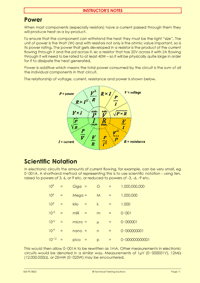 |
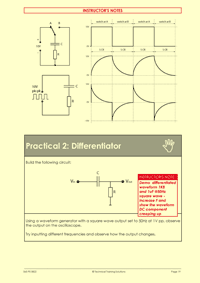 |
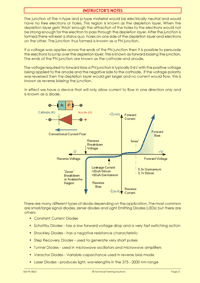 |
Page 11 of the Practical Electronics course notes, discussing the complex forms of Ohm's law |
Page 19 of the Practical Electronics course notes, exploring how integrators and differentiators work |
Page 21 of the Practical Electronics course notes, where we look at the various types of LEDs in common use |
At strategic points on the course we do practical exercises that reinforce or explore the technical issues. These circuits are built on our breadboards and each candidate has their own test equipment including oscilloscope, multimeter, function generator and power supply, etc.
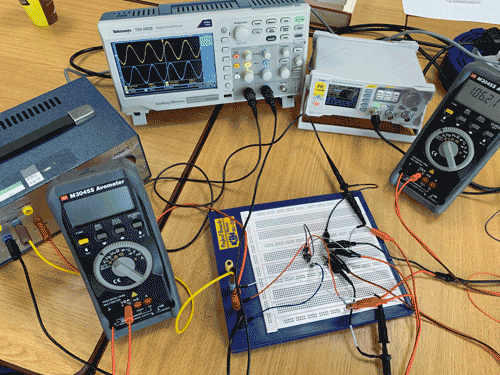 |
The test gear that each candidate uses |
Next we look at rectification, voltage regulators and transistors. We look at how these circuits might be integrated to form a full power supply unit. We build various circuits to explore and prove the operation of these circuits.
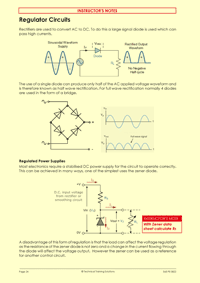 |
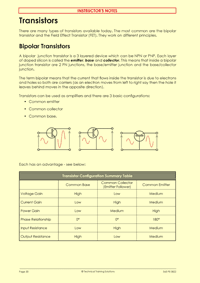 |
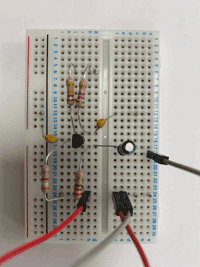 |
Page 24 of the Practical Electronics course notes, exploring rectification and shunt regulation |
Page 30 of the Practical Electronics course notes, discussing how transistors are biased and what modes they are used in |
One of the practical exercises where our candidates build a single stage Class A transistor amplifier |
Op-amps are used in many electronics circuits, hence it's important that our candidates gain a proper insight into their uses, configurations, limitations and applications. We look at op-amp circuits like comparators, inverting amplifiers, summing amplifiers, buffers, ac amplifiers, schmitt triggers, oscillators and integrators.
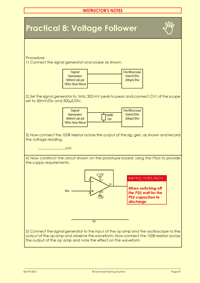 |
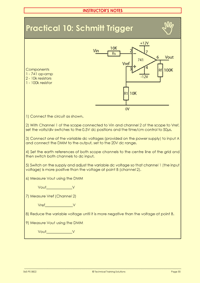 |
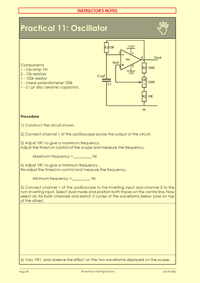 |
Page 49 of the Practical Electronics course notes, where we do a practical exercise building a voltage follower circuit |
Page 55 of the Practical Electronics course notes, where we do a practical exercise building a schmitt trigger |
Page 58 of the Practical Electronics course notes, where we do a practical exercise building an oscillator |
Then we look at digital logic circuits. We look at the main logic families (TTL and CMOS), studying their input and output stages, the common gates that are available, and the more complex functions that are used.
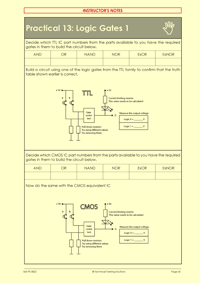 |
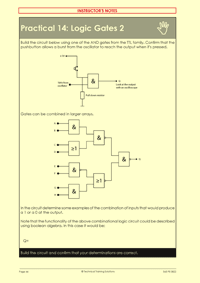 |
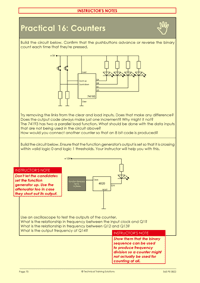 |
Page 65 of the Practical Electronics course notes, where we do a practical exercise exploring the worst-case logic levels of TTL and CMOS |
Page 66 of the Practical Electronics course notes, where we do a practical exercise looking at how logic gates can be combined to produce complex functions |
Page 70 of the Practical Electronics course notes, where we do a practical exercise getting a digital counter to increment and decrement its values |
The last part of our course sets the candidates the task of bringing all of the above experience together when they design and build a circuit that incorporates an analogue front end to amplify a microphone, an analogue to digital converter (ADC) to convert this into a digital data stream and a digital to analogue converter (DAC) that converts this data back into a signal that we can amplify to drive a speaker. In order to do this the candidates need to study the data sheets for the devices that we want them to use. Each candidate will progress differently in this exercise but we expect all of them to get a basic circuit working - with the help of our instructor of course. The following is an example of what they might produce:
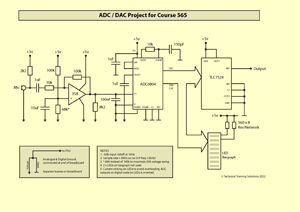 |
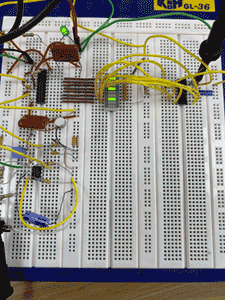 |
An example of the circuit that candidates might design |
An example of the circuit on its breadboard |
If you would like to see some of the equipment used on the Practical Electronics training course for yourself, then please call us to arrange a visit to our offices in Kent. Alternatively, we can visit you anywhere in the British Isles.


